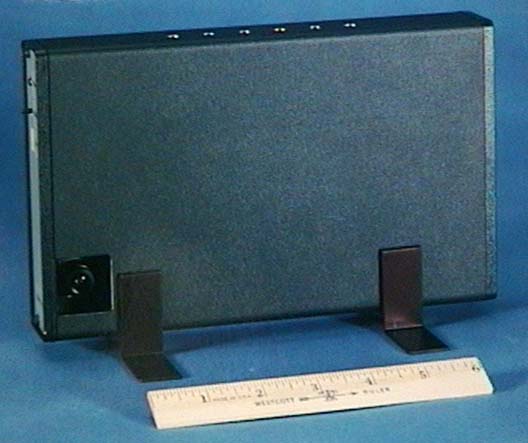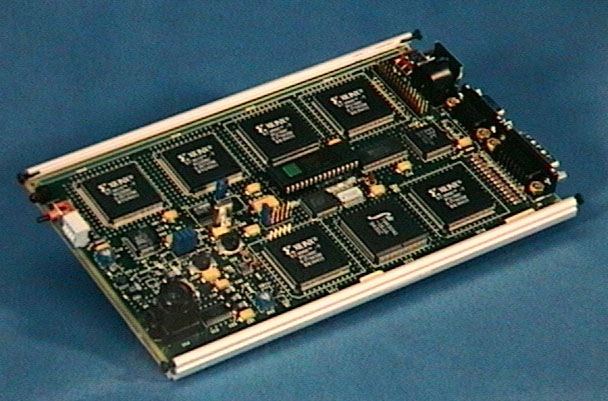|
The BULLSEYE Image Processor |
||
| Home
Projects About Me
|
BULLSEYE is a real-time image processor (circa 1994) designed to track objects in 3-D, to
serve as a user-interface for video-gaming and virtual-reality applications. Its
compact design incorporates everything from the CCD imager and lens to the
processor and a reconfigurable interface to an application processor, such as a
video game console. With the flexible interface, BULLSEYE can emulate existing
devices such as joysticks or steering wheels, or pass full 3-D information to a
more savvy host application.
BULLSEYE is a typical ``black box,'' 5.5"H by 9"W by 1.5"D, with a 1" square hole in one corner of a 5.5" by 9" side. Through the hole peeps a small camera lens. You can see them at the EPCOT attractions; that page tells you where.
It uses a Sony CCD chip, several Xilinx FPGAs, a 64Kx16 DRAM chip, and an IDT R3041 processor at 14.3 MHz to do full real-time 3-D processing based on a sophisticated color keyer front-end. The entire system fits onto a small printed circuit board, shown below (click to enlarge), and was designed to fit onto a single ASIC. The Xilinx FPAs perform the following functions clockwise from left:
The middle chip in the bottom row is the IDT processor. The chip with the green square on it is a flash memory chip; the DRAM is to its right. The lower left corner contains the CCD chip with lens mounted on it, surrounded by a small sea of analog signal handling and power-supply components to create the voltage levels required for the CCD. |

